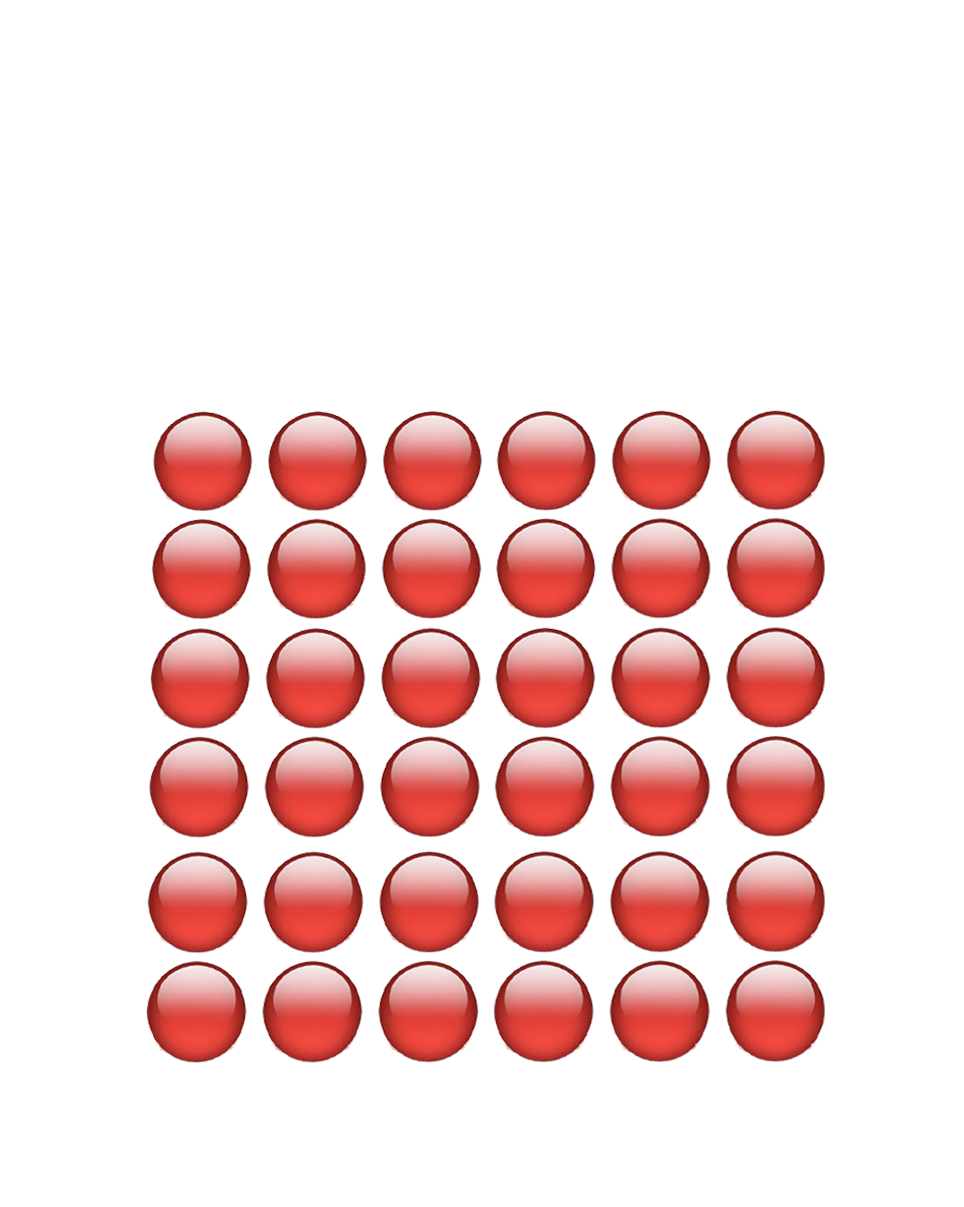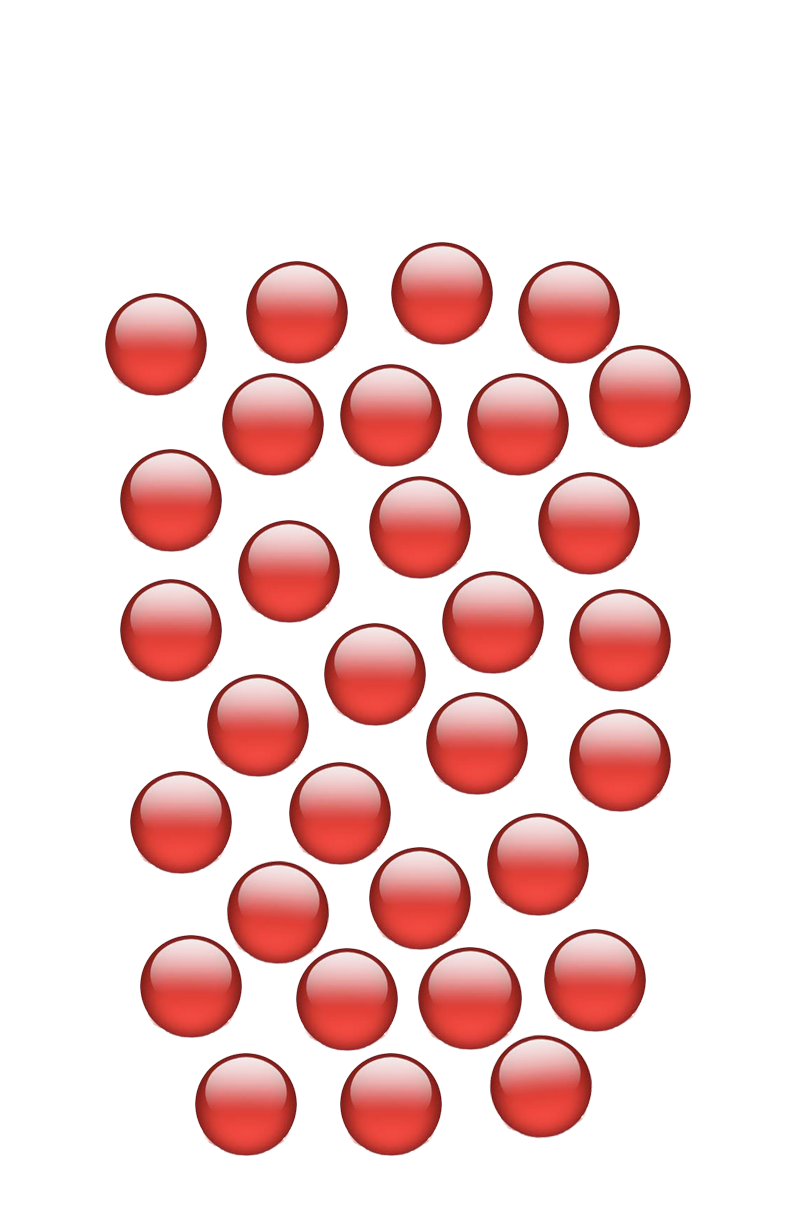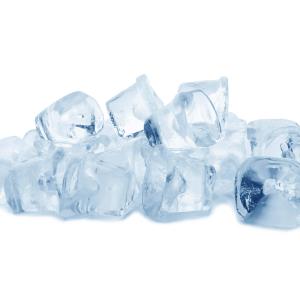Properties of materials
Scientists use the word ‘material’ to refer to all matter in the universe; this means all solids, liquids and gases (and plasmas) that exist. It includes all the objects and animals we see every day; the water in rivers, lakes and oceans; and the air we breathe. All of the objects encountered and used in daily life are made from materials. Materials take up space and have mass.
The following differentiation can be useful:
- an object is made of material(s)
- a material is made up of substance(s)
- properties are the physical characteristics or attributes of objects (for example, size or shape) or materials (for example, texture or flexibility).
Materials
Some objects are made from a single material, for example, a steel sewing needle or a wooden plank. Others are made from a combination of materials, for example, toys can be made by combining plastic and fabric. Metal saucepans often have heat-resistant plastic handles. The properties of an object are determined by the materials that are used to make it and how those materials are put together. Materials can be classified in a variety of ways, including:
- by origin, such as natural or processed/manufactured
- by type, such as metal, glass, fabric, ceramic or plastic
- by properties, such as porosity or absorbency
- by uses, for example, construction materials.
Plastic is the name given to a wide group of materials characterised by their:
- chemical structure, generally made from long molecular chains, and
- ability to be moulded into different shapes, such as films, fibres and solid objects.
Most plastics are synthetic and are often produced from byproducts of crude oil and natural gas, which are non-renewable resources. Two examples of synthetic plastics are cling wrap and Polyethylene terephthalate (PET) used to make drink bottles. There are also a few natural plastics, for example, natural rubber.
Properties
Objects and materials can be described according to their properties, including their size and shape. The properties of an object can also rely on the materials that it is made of, such as water resistance and transparency. Properties of materials do not rely on the properties of the object. For example, a plastic doll with one missing arm is a different object from a doll with two arms, but it is still made of plastic. The properties of the material have stayed the same but the properties of the object have changed.
Properties of materials can include:
- Strength: a material’s ability to resist forces applied to it. The more force a material can resist, the stronger it is. Tensile strength refers to a material’s ability to withstand being pulled end from end, while compressive strength refers to a material’s ability to withstand being compressed or squashed.
- Hardness: how easily the substance is worn away or scratched. Diamond is the hardest naturally occurring substance known and can only be scratched by other diamonds.
- Brittleness: a material is brittle if it is hard but breaks easily (like glass).
- Transparency: how well light passes through a material. If a material can be seen through, it is described as transparent. If it lets light through but still obscures vision, it is translucent and if it doesn’t let light through, it is opaque.
- Elasticity: a material is elastic if it changes shape when a force is applied to it and recovers its original shape when the force is removed. Rubber and many types of plastics are very elastic.
- Malleability: how easily a material can be bent or shaped. A material that can be deformed or reshaped easily is said to be malleable.
- Conductivity: how easily a material transmits heat and electricity. Most metals are very conductive, whereas plastics are usually good insulators, meaning they are not conductive.
- Viscosity: how much a fluid resists flowing. Honey is quite viscous because it flows slowly whereas water flows easily and is not very viscous.
- Density: the mass of a substance per unit of volume. Lead and gold are very dense, while cork is not.
- Porosity: materials that allow water, air and other fluids to move into them are porous. A washing up sponge is porous. When we want to make something, we take these properties into account (as well as cost and availability) and select the most suitable material for our purpose.
- Absorbency refers to the ability of a material to take in water and other fluids. Absorbent materials have surfaces that attract water (hydrophilic) and contain small spaces called pores into which liquids can enter. Paper, sponge and most woods are absorbent. The higher the number of pores, the greater the volume of liquid that can potentially enter the material.
As language is context specific (i.e. distinguishing between ‘hard’ or ‘strong’, ‘weak’ or ‘light’), it is important that appropriate language is used to describe and compare the properties of materials.
Material changes
Changes occur to materials and objects around us every day. These changes occur because of an input or removal of energy, such as removing heat energy to freeze water or adding mechanical energy to knead dough. Some changes are easily reversible, for example, a melted ice pole can be re-frozen. Others are difficult or impossible to reverse, for example, a cake cannot be uncooked. Physical change is a change to the physical properties of an object or material where the substances remain the same. The object itself might not remain the same, for example, a rock could be ground to powder or a mug could be smashed to pieces, but the substances are still present. There is still rock and porcelain.
Recycling is a way to convert waste materials into reusable materials. Paper, glass, some metals (steel and aluminium) and some plastics can be collected and turned into new materials.
- Cardboard, used paper, and milk and juice cartons can be manufactured into recycled office paper, recycled toilet paper and recycled cardboard.
- Soft drink bottles and other bottles made from polyethylene terephthalate (PET) plastic (marked with a number ‘1’) can be manufactured into detergent bottles, carpet and recycled fabric.
- Glass bottles and jars, sorted by colour and melted down, can be used to make new containers.
- Metal from aluminium and steel cans is used for making other aluminium and steel items.
- High-density polyethylene (HDPE) plastic (marked with a number ‘2’) like milk bottles and shampoo containers can be recycled into wheelie bins, irrigation pipes and air conditioning hoses.
Solids, liquids and gases
All matter is made up of very small particles called atoms. These atoms can join with other atoms to form molecules. Every type of material contains specific types of atoms or molecules, resulting in different materials having different properties. For example, gold is made up of gold atoms only. Water is made up of water molecules, a combination of hydrogen and oxygen atoms. The way the atoms or molecules are arranged in a material will affect its state of matter.
States of matter
A material might be found in different states. The most familiar states are solid, liquid or gas. Other states of matter are now recognised, such as plasma and liquid crystal, but these will not be dealt with at this level. The amount of energy the atoms or molecules in a material possess determines the material's state of matter, for example, the molecules in solid chocolate have less energy than those in melted chocolate.
- Solids have atoms or molecules that are held together with strong bonds. The atoms vibrate in place but they do not change position. This means that a solid holds its shape and does not flow, nor can it be significantly compressed.
- Liquids have atoms or molecules that are held together with weaker bonds. They stay close together and so occupy a constant volume of space. One litre of water takes up the same amount of space in any container, but will take the shape of its container, for example, the shape of a bottle, glass or bowl. Thus a liquid can only be compressed a little bit, if at all. However, the bonds are loose enough to let atoms or molecules slide past each other. Due to the force of gravity, a liquid flows and takes the shape of the container into which it is poured.
- Gases have particles that are not held together with strong bonds. In the right conditions they can spread out and fill any available container. They can also be compressed. Because gas spreads out, it cannot be measured in an open container. Instead, gas can be trapped in a sealed container and the volume, temperature and pressure is used to describe the amount of gas present.
Materials change state when they gain or lose heat energy. This is a physical change because there is no chemical reaction or chemical change occurring. Read more about this on the Changing substances page.
Particle model
The difference between a material in a solid or liquid state is due to the arrangement of its atoms or molecules. As primary students are not introduced to the concepts of 'atoms' or 'molecules', this page will use the collective term 'particles' instead.
In solids, the particles are linked by rigid bonds, which means the material keeps its shape. The particles in a solid are able to vibrate, but the strong bonds prevent any further movement. When most solid materials are heated sufficiently they reach their melting point and change into liquid materials. The material has the same types of particles, but their interactions are different and so the properties of the material change significantly. This is known as a physical change.

In liquids the bonds between the particles are weaker, allowing the particles to slide past each other due to the force of gravity or external pressures. All liquids occupy a definite volume of space and are able to flow; under the influence of gravity they will spread out and take the shape of the container that they are in or spread out on a flat surface. However, not all liquids flow the same way. The viscosity of a liquid is a measure of its resistance to flowing. When most liquids are heated sufficiently their particles separate from each other and form a gas. This is known as a physical change.

Gases have much more space between their particles and are therefore generally hard to see, although a few can have a slight coloured tinge. When a liquid is heated sufficiently, its particles are so energised that they separate from each other and only have weak interactions. It is easier to see the effects of a gas, for example, by looking at the movements of tiny ash particles in smoke as they float in the air. Because the particles are not bound strongly together, gases spread out and fill the container that they are in. They have comparably low viscosity and density and can be compressed, unlike solids and liquids. Gases vary in how much they can be compressed, the property of compressibility. If the compression from external pressure is strong enough and/or the temperature is low enough, gases will revert to liquid form.
Gases expand when heated and spread out far more than liquids or solids since the interactions between their particles are far weaker. This means that the density (mass per unit of volume) of a gas at a certain pressure can vary significantly depending on the temperature. Hot air balloons use this principle to rise above the ground. The air they contain is much less dense than the surrounding air, which is therefore pushed upwards.
Gases have mass and weight. However, it is hard to demonstrate this in the classroom since air surrounds all the measurement devices, just as a fish couldn’t use scales to measure the weight of water when it is surrounded by water.

Natural and man-made materials
In chemistry a mixture refers to a material that is made of two or more substances (or materials) mixed together without combining chemically together. Baking soda dissolved in water is a mixture since the particles of baking soda are present in the water and retain their properties. When baking soda and vinegar are mixed together, they react and create new substances so there is no longer a mixture of baking soda and vinegar.
Mixtures that are uniform in composition are called homogeneous. Two random samples of a homogeneous mixture would contain the same quantities of materials, for example, well-mixed flour and sugar or well-stirred vinegar and water create homogeneous mixtures. Mixtures that are not uniform are called heterogeneous. Such mixtures can have very different elements, such as a mixture of stones and sand, or may have clear zones between the two elements, such as oil and water. Students are not expected to use these terms— they are included here as background information only.
Some mixtures are easy to separate using the properties of the materials. For example, if the substances have particles of different sizes they can be separated using a sieve. However, if the two substances do not have properties sufficiently different from each other, then it is very difficult to separate the mixture. For example, it is difficult to separate a mixture of icing sugar and cocoa powder. Scientists use many different properties of substances to separate them, such as their boiling points, movement through filter paper or ability to dissolve into different solvents.
Many everyday objects are made of materials that are mixtures. Sometimes it might not be evident that a material is a mixture until a change happens. For example, fresh milk naturally separates, however, modern processes homogenise (from the Greek homo = the same) the mixture of fats and water so that it no longer separates.
Natural materials are materials produced by natural processes and changes. Rocks, water and air are natural materials. Sand and soil are natural materials that are produced by natural processes. Cotton fibres, wool fibres, vegetable oils, waxes and wood (timber) have had some processing, but are still natural materials.
Processed or manufactured materials, also called synthetic materials, are made by transforming raw natural materials into new substances, usually involving chemical changes. Making glass from sand, refining metals from ores, making paper from wood pulp and firing ceramics from clay are examples of how natural materials can be used to make processed materials.
Some common types of processed materials include:
- metals, which generally need to be refined from ores
- ceramics, which are mixtures of sand, gravel, water and a binding agent
- glass, which is made from melting several minerals (including silica found in sand)
- plastics, which are made from byproducts of the oil industry.
The chemical and physical properties of substances are determined by their structure at a range of scales.
This list of alternative conceptions is not meant to be comprehensive, but instead aims to provide a starting point.
Alternative conception | Accepted conception |
| Humans make chemicals. | All matter is made of atoms and molecules (chemicals). |
| Air is weightless or has negative weight. | Air has mass and can be affected by gravity. Therefore, air has weight. |
| There is air between air particles/molecules. | There is empty space, not air between particles. |
| The particles in the air are not moving. | Air is made up of gas particles that are constantly moving (have kinetic energy). |
| The only gas we breathe out is carbon dioxide. | The air we breathe is 21% oxygen, 78% nitrogen (and small amounts of carbon dioxide, neon and hydrogen). We use approximately 3% of the oxygen we breathe in. This is why CPR works (18% oxygen in each breath out). |
| Liquids can be compressed. | Only gas can be compressed. |
| Gas means the gas we use in barbeques or cooking. | Gas is a state of matter where particles can fill any size or shape container. |
| A conductor is something that keeps things warm. | Conductors allow energy (heat and electricity) to be transferred. |
| Metals attract cold better than wooden objects. | Metals are good conductors of heat. Touching metal in a cold room will conduct the heat away from your body (making your hand feel cold). Wood does not conduct heat as well as metal. This keeps the heat in your hand (feels warmer than metal). |
| Atoms are solid spheres. | Atoms are made up of mostly space that contains sub-atomic particles (protons, neutrons, and electrons). |
| Atoms have the same properties as their bulk material. For example, iron atoms can melt. | Atoms have different properties than the bulk substance. |
| All liquids boil at 100 degrees Celsius. | All materials have different boiling points. |
| A hard material is strong. | Hardness is an inability to be scratched or deformed. Strength is the amount of force applied to a material before it breaks. |
References
AITSL. (n.d.). Resource. AITSL. https://www.aitsl.edu.au/tools-resources/resource/dispelling-scientific-misconceptions-illustration-of-practice
Allen, M. (2019). Misconceptions in Primary Science 3e. McGraw-hill education (UK).
Ideas for Teaching Science: Years 5-10. (2014, April 14). Resources for Teaching Science. https://blogs.deakin.edu.au/sci-enviro-ed/years-5-10/
Pine, K., Messer, D., & St. John, K. (2001). Children's misconceptions in primary science: A survey of teachers' views. Research in Science & Technological Education, 19(1), 79-96.
Redhead, K. (2018). Common Misconceptions. Primary Science Teaching Trust. https://pstt.org.uk/resources/common-misconceptions/
University of California. (2022, April 21). Correcting misconceptions - Understanding Science. Understanding Science - How Science REALLY Works... https://undsci.berkeley.edu/for-educators/prepare-and-plan/correcting-misconceptions/

